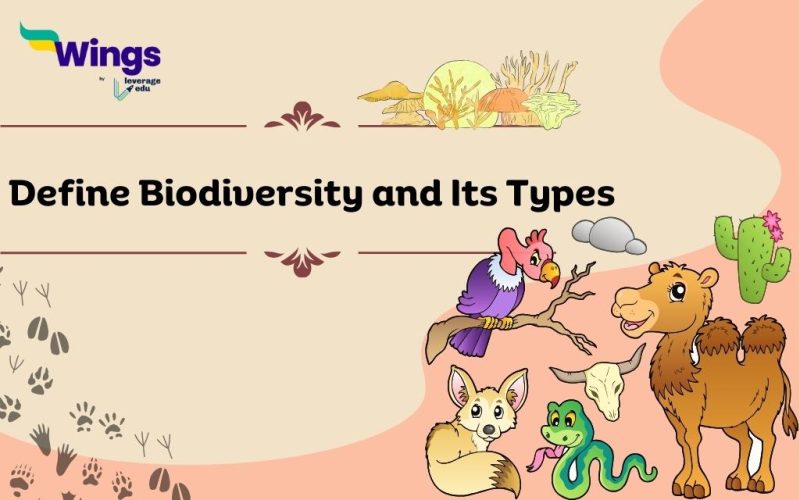Life on earth is a truly magical experience. It is an intricate web of different living organisms where each one plays an important role in maintaining the life and balance of the ecosystem. From the tiniest microbe which is invisible to the human eye to the huge elephant that roams the jungles of central Africa, everyone is a part of this complex system of biodiversity. But what is biodiversity, and what is the definition of biodiversity and its type? Why is it one of the most important parts of our lives? Let’s find out together.
Also Read: International Day of Biological Diversity 2023
What is Biodiversity?
The term biodiversity was first coined in 1985 by Walter G. Rosen. It is actually a compound word that was formed from Biological diversity, coined by Lovejoy. Moreover, biodiversity is among the most essential parts of our lives on earth. This is because, without it, life will not sustain on the earth. Biodiversity, in simple terms, refers to the diversity in living organisms such as animals, different types of plants, and fungi that you will find in one specific area. Despite their differences, each of these organisms works together to maintain the intricate balance of life.

Also Read: What is Soil Erosion? Definition, Causes, Effects and Prevention
Types of Biodiversity
There are three types of biodiversity which include genetic biodiversity, species biodiversity, and ecological biodiversity. Let’s explore their features and characteristics one by one.
Species Diversity
- Species diversity refers to the huge variety of species found in any specific region.
- It includes everything from plants and animals to microorganisms.
- Interestingly, no two individuals belonging to the same species are exactly alike. For instance, even humans show a significant amount of diversity among themselves.
Genetic Diversity
- Genetic biodiversity refers to the variations that occur in the genetic composition of the organisms.
- This is why every organism of a particular species differs from another organism of the same species.
- Just like humans, genetic diversity is commonly seen in rice, wheat, barley, etc. Sounds pretty interesting, right?

Also Read: What are 10 Ways to Reduce Pollution?
Ecological Diversity
- Ecological biodiversity refers to the different types of ecosystems that are seen in a specific geographical area.
- Moreover, it also includes the different species that live together in that ecosystem and their interaction.
Why is Biodiversity Important?
Now that we know the biodiversity definition, let us move on. The presence of biodiversity makes our planet a beautiful place to live. It serves numerous essential functions such as:
- Biodiversity supports all types of life on Earth by providing food, water, and other valuable resources.
- Without the diversity of living organisms, we would not have the food that we eat or the air that we breathe.
- It is essential for the proper functioning and maintenance of the ecosystem.
- Biodiversity also plays a significant role in pollination and seed dispersal which helps plants to reproduce.
- Interestingly, biodiversity also helps to regulate the earth’s climate.
- It can also boost the availability of jobs in different sectors.
- Another important aspect is the ethical importance of biodiversity which states that all species have the right to exist.
Threat to Biodiversity
Over the last few centuries, a plethora of threats to biodiversity have been identified. These not only put the humongous diversity of our planet at risk but also strip us of its rich heritage and culture. Here are a few common factors leading to the loss of biodiversity:
- The destruction of natural habitats such as urbanization and deforestation has led to a loss of biodiversity.
- Overpopulation is another factor that contributes negatively to our planet as a threat to biodiversity.
- Types of pollution such as air, water, and also affect our environment and its ecosystem gravely.
- Climate change is hampering the natural climate patterns of our planet subsequently leading to an unprecedented rise in temperature, rise in sea levels, etc.
Also Read: Essay on Save Trees: Trees for Generation
Related Blogs
| National Pollution Control Day 2023 | Slogans on World Environment Day |
| Water Pollution Definition | Types of Pollution |
| What is the Causative Germ for AIDS? | Take the World AIDS Day Quiz! |
FAQs
Biodiversity, in simple words, refers to all those types of living organisms that are found in the ecosystem of a specific area. This includes animals, plants, microorganisms, and fungi which together make up our world. Moreover, there are different types of biodiversity including genetic, species, and ecosystem diversity. Now you can easily define biodiversity and its type.
The three types of biodiversity are genetic diversity, species diversity, and ecosystem diversity.
Edward O. Wilson, Ph. D. is known as the father of biodiversity.
Hope you have fun knowing the definition of biodiversity and its type. For more information and such informative articles, check the trending events page of Leverage Edu.
 One app for all your study abroad needs
One app for all your study abroad needs













